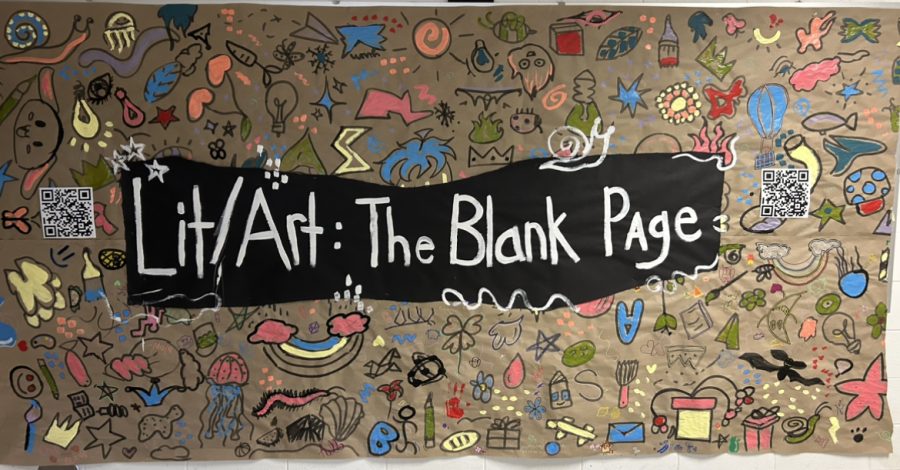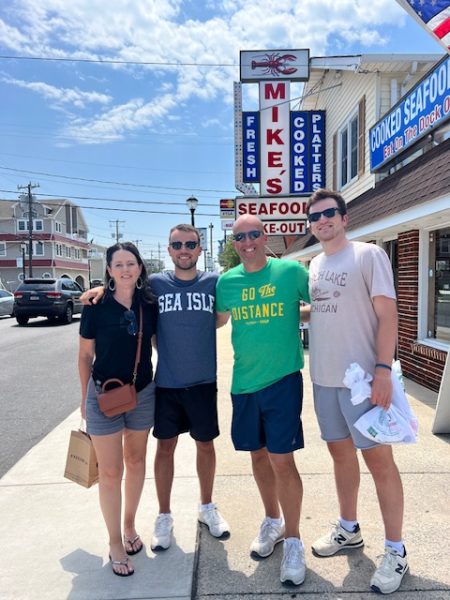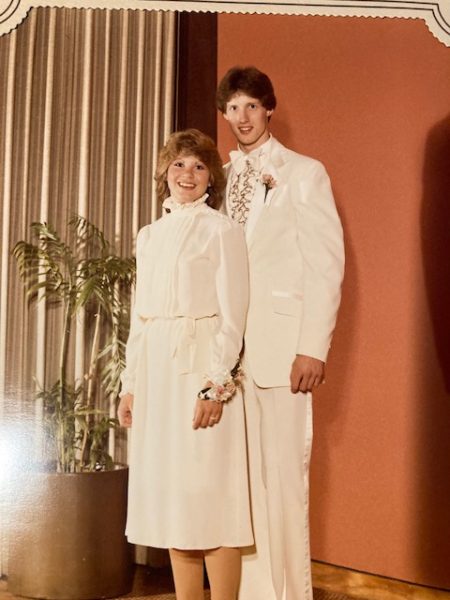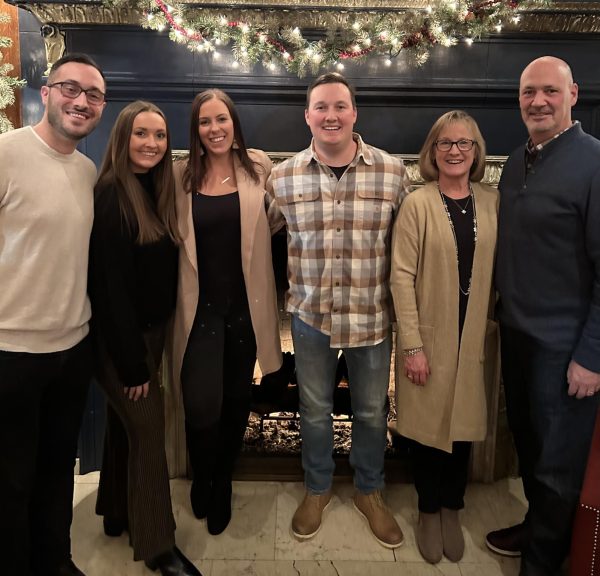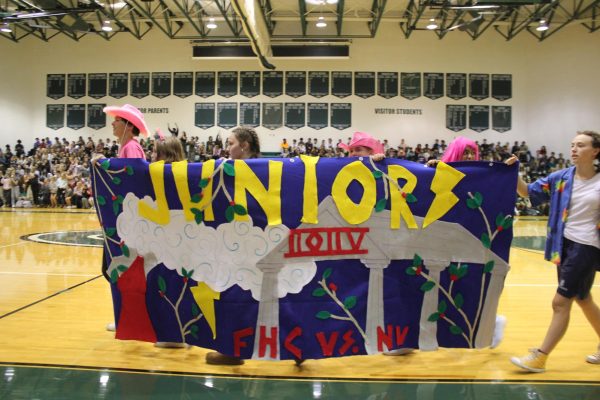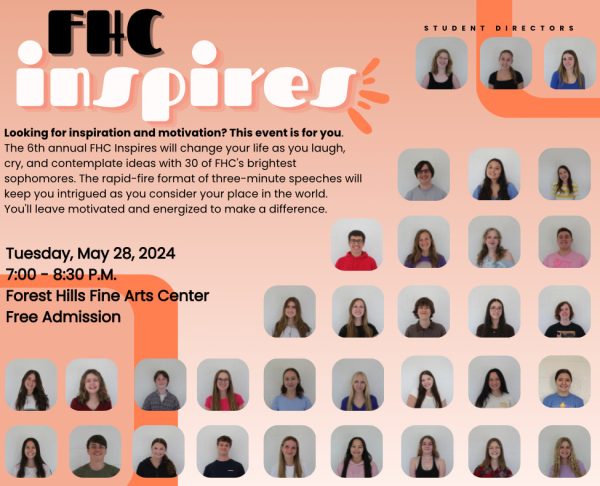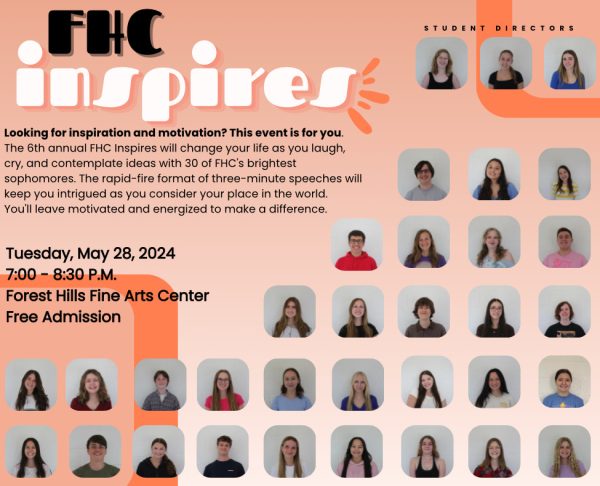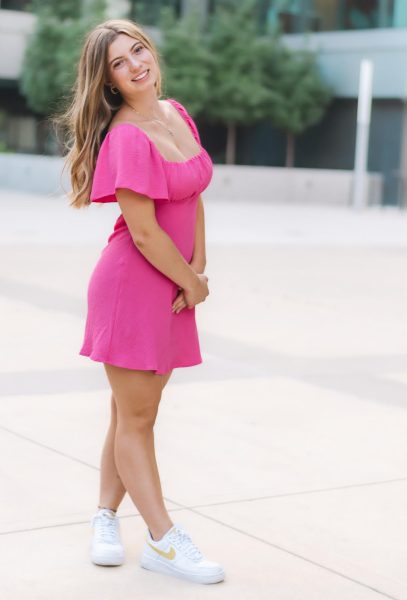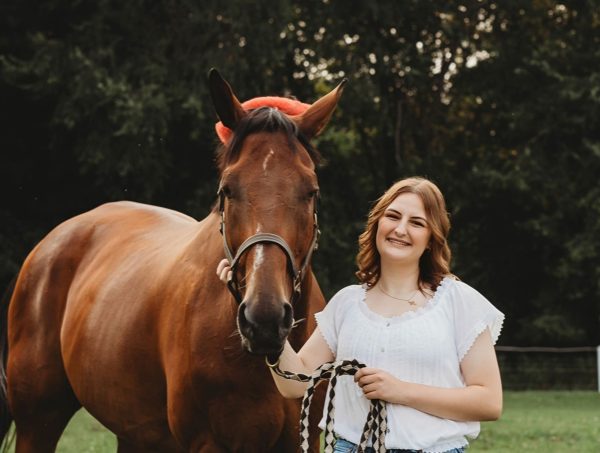Lit Art: The Blank Page is a class for students who want to break past the standards of education
A poster done by FHC’s Art Club to advertise Lit Art: The Blank Page.
While sitting in her art department oasis, the trajectory of art teacher Grace Stynes’ year was altered completely when a surprise visitor stopped by—a visitor who normally resides on the opposite side of the school.
This guest was English teacher Anne Keller, motivated and with an idea. After individually conceptualizing the concept for a new class, and communicating her thoughts with other educators around her, she knew the next natural step was a conversation with Stynes.
“I was sitting in [my] chair and [Keller] walked in one day and was like ‘you’re the art teacher,’” Stynes said, “and she had this idea of ‘what if we took everything we know, put it in a pot, stirred it, and saw what came out.”
With this initial conversation, and many more following, Lit Art: The Blank Page, was born.
This two-hour block class focuses on marrying art and literature in a creative and free way; the main intent of Lit Art is to allow students to choose how they explore traditional art and English concepts. It also aims to give hands-on experiences and non-traditional approaches to learning new content.
“[The class] is starting with big overarching questions,” Stynes said, “[such as], ‘what makes art ‘art’?’ [or] ‘can literature be art?’ And then, [we intend to] use the art and literature to guide how we seek out the answers to those questions. So, [this class] gives [students] a skeleton and tools [as a] guidepost, but how [students] approach it will differ [from] student to student.”
With such a teaching style, students will find many differences between this class and their other, more traditional, classes. Lit Art aims to stray away from the standard lecture-style class that most students are accustomed to—an idea that tends to entice some but intimidates others.
This offers a question: what type of student would excel in this class? The initial response to this question is someone incredibly artistically inclined and who also has a passion for reading. Although that can absolutely be the case, Stynes urges students to think differently about the idea of who should enroll in this class.
“It’s really important for [students] to figure out what [they] want out of [their] education and take the class that’s right for [them],” Stynes said. “If [a student] is open to collaboration, being in a discussion-based class, having a lot of choices, having ambiguity, and that sounds really exciting to [them], then this class is definitely for [them].”
It’s really important for [students] to figure out what [they] want out of [their] education and take the class that’s right for [them]. If [a student] is open to collaboration, being in a discussion-based class, having a lot of choices, having ambiguity, and that sounds really exciting to [them], then this class is definitely for [them].
— Grace Stynes
Thus, if a student yearns for those qualities in education, no matter their artistic ability or amount of love for literature, this class should find itself on the top of their “must-take” list for high school classes.
For junior Maggie Schimeck, this was absolutely the case. As a dedicated artist and passionate writer, Lit Art immediately caught her attention and was just as quickly added to her course list for senior year.
“[Lit Art] really encompasses a lot of the things I like to do,” Maggie said. “I love literature [and] writing [as well as] art, so having a block class where I could do both of those things fits [me] really well.”
Although the factors that make this class a perfect fit for Maggie are obvious, there are also many other reasons why Lit Art is the class for her.
Most notably, Maggie is excited about the promised similarities between FHC’s Art Club, which she is an avid member of, and the structure of this class. Of course, this means a creative environment, but also a collaborative one.
“[In Art Club], we try to do things as a group, and we try to include everyone,” Maggie said. “I feel like Lit Art is [going to be similar] and [structured like] ‘Alright, this group of people can do this [project] and brainstorm together. But, [similarly to] Art Club, you can also choose to do something individually if you want.”
With Lit Art being a class that Keller helped conceptualize from the ground up, she also finds joy in the prospect of watching students excel in the collaborative nature of the class. She emphasizes the notion that students will constantly be given the opportunity to problem-solve, create, and learn while working together.
With this level of collaboration enters a very practical lesson that students are encouraged to take away from Lit Art. Keller hopes a class structured in this way will show students that communication and working with others is the key to being successful in all walks of life.
“In any kind of job you might have,” Keller said, “you’re going to have people with all different backgrounds and areas [of expertise]. There will be people with technology experience, human relations experience, [and so on], and you’ll want to [effectively] work with everyone on your team. So, [the question becomes] how can we create that kind of environment in a classroom?”
With this class having the potential to so greatly influence students’ lives, it’s no wonder that Keller and Stynes alike hope for Lit Art to inspire education to further progress in the walls of FHC.
With so many promising opportunities and the bounds of reshaping learning every day, it’s easy to picture the ways that teachers could make more connections in education.
“I think there are other opportunities for other teachers and disciplines to come together,” Keller said, “and I think there are some challenges to doing that. But, maybe if others see that [Lit Art] is an option they might say ‘Oh, well I have an idea.’ I can see a lot of connections where you can develop courses that [cover] multiple content areas.”
A class as fresh, exciting, and inspiring as this one promises an exciting future for FHC. As students think about what courses they would like to incorporate into their future schedules, Lit Art: The Blank Page can guarantee that any willing student will be a part of something outstanding.
As the boundaries of education shatter all across the globe, it’s thrilling to know that the classrooms of FHC are connecting too.
“[Our goal] is to do something really different,” Keller said. “[To think that] the sky’s the limit, and try to break down the traditional ways of doing things. [To say] ‘Okay, how can we tear down the walls and try something new?’ That’s really what’s [exciting about Lit Art].”
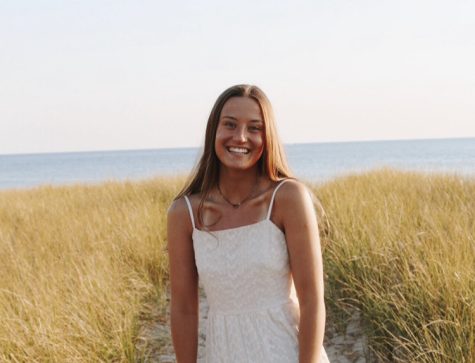
Katelynn is a senior entering her second and final year on The Central Trend. Besides writing, she loves singing, painting, and late-night bonfire chats...





















































































